Neuronal regulation of type 2 innate lymphoid cells via neuromedin U
- PMID: 28869974
- PMCID: PMC5714273
- DOI: 10.1038/nature23469
Neuronal regulation of type 2 innate lymphoid cells via neuromedin U
Abstract
Group 2 innate lymphoid cells (ILC2s) regulate inflammation, tissue repair and metabolic homeostasis, and are activated by host-derived cytokines and alarmins. Discrete subsets of immune cells integrate nervous system cues, but it remains unclear whether neuron-derived signals control ILC2s. Here we show that neuromedin U (NMU) in mice is a fast and potent regulator of type 2 innate immunity in the context of a functional neuron-ILC2 unit. We found that ILC2s selectively express neuromedin U receptor 1 (Nmur1), and mucosal neurons express NMU. Cell-autonomous activation of ILC2s with NMU resulted in immediate and strong NMUR1-dependent production of innate inflammatory and tissue repair cytokines. NMU controls ILC2s downstream of extracellular signal-regulated kinase and calcium-influx-dependent activation of both calcineurin and nuclear factor of activated T cells (NFAT). NMU treatment in vivo resulted in immediate protective type 2 responses. Accordingly, ILC2-autonomous ablation of Nmur1 led to impaired type 2 responses and poor control of worm infection. Notably, mucosal neurons were found adjacent to ILC2s, and these neurons directly sensed worm products and alarmins to induce NMU and to control innate type 2 cytokines. Our work reveals that neuron-ILC2 cell units confer immediate tissue protection through coordinated neuroimmune sensory responses.
Conflict of interest statement
The authors declare no competing financial interests.
Figures


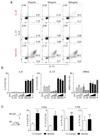
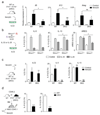
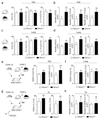



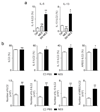

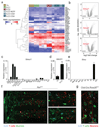
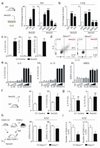
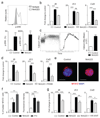
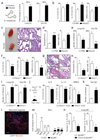
Comment in
-
Neuroimmunology: ILC2s touch a nerve.Nat Rev Immunol. 2017 Nov;17(11):661. doi: 10.1038/nri.2017.119. Epub 2017 Oct 16. Nat Rev Immunol. 2017. PMID: 29034906 No abstract available.
-
Can U Turn ILC2s Up?Cell. 2017 Nov 2;171(4):742-744. doi: 10.1016/j.cell.2017.10.013. Cell. 2017. PMID: 29100072
-
Immunology: The Neuronal Pathway to Mucosal Immunity.Curr Biol. 2018 Jan 8;28(1):R33-R36. doi: 10.1016/j.cub.2017.11.025. Curr Biol. 2018. PMID: 29316420
-
Commentary: Neuronal regulation of type 2 innate lymphoid cells via neuromedin U.Front Pharmacol. 2018 Mar 14;9:230. doi: 10.3389/fphar.2018.00230. eCollection 2018. Front Pharmacol. 2018. PMID: 29593546 Free PMC article. No abstract available.
References
Publication types
MeSH terms
Substances
Grants and funding
LinkOut - more resources
Full Text Sources
Other Literature Sources
Molecular Biology Databases

